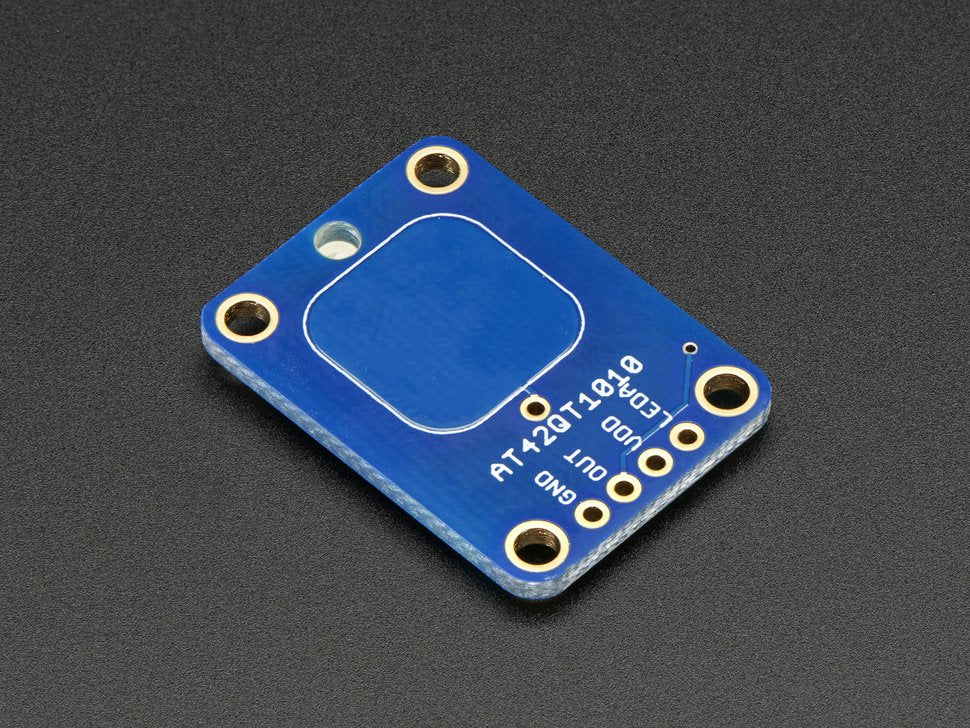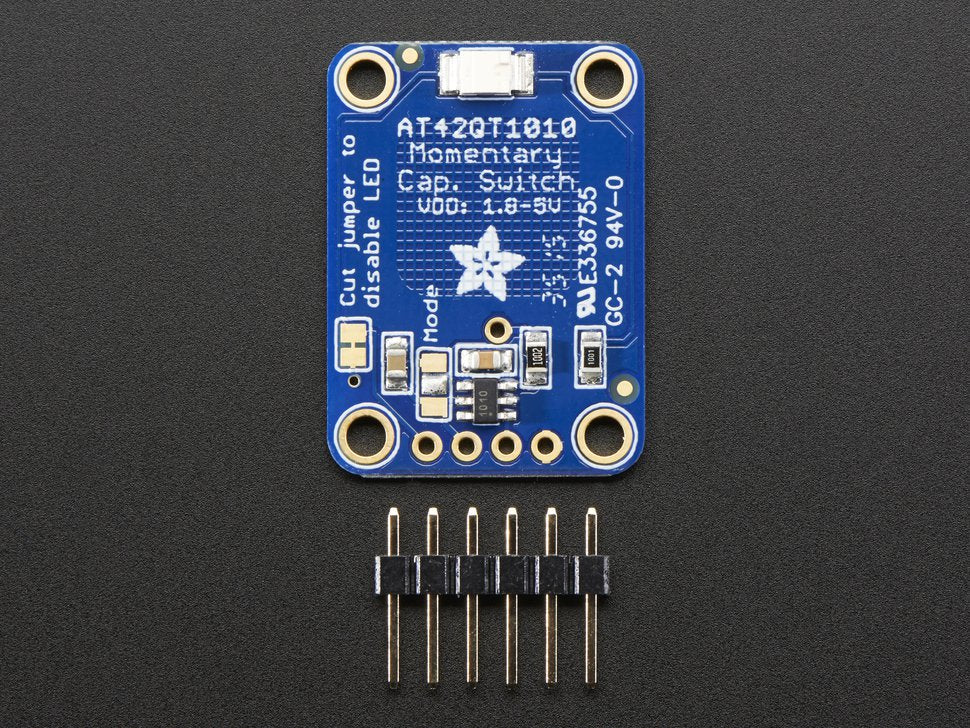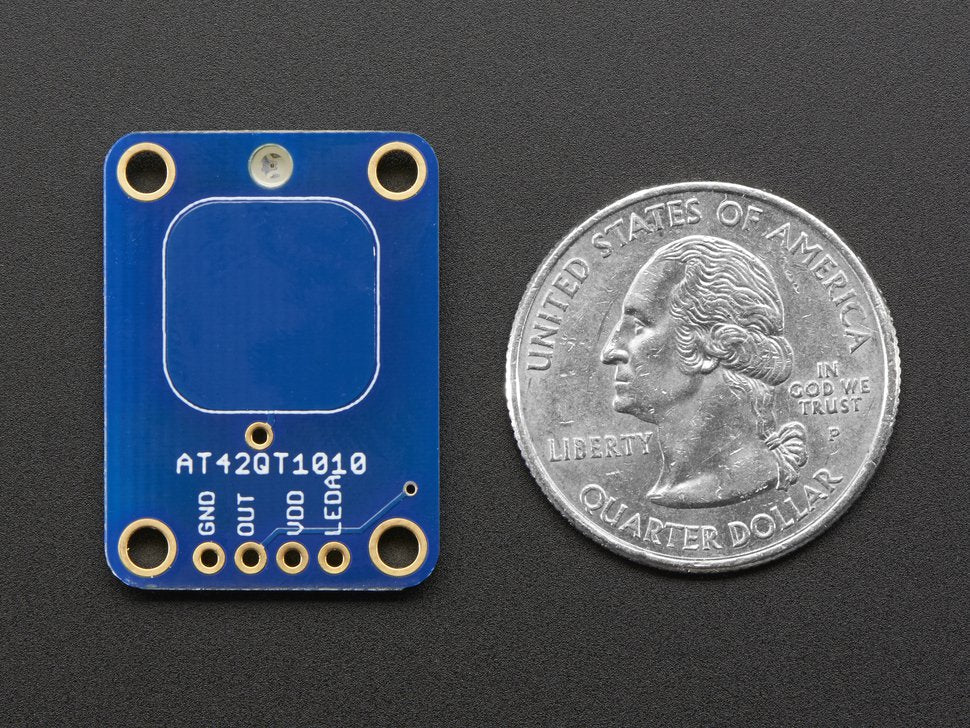Touch Sensor Standalone Momentary Capacitive Breakout AT42QT1010 - This breakout board is the simplest way to create a project with a single "momentary" capacitive touch sensor. No microcontroller is required here - just power with 1.8 to 5.5VDC and touch the pad to activate the sensor.
When a capacitive load is detected (e.g. a person touches the sensor-pad area) the red LED lights up and the output pin goes high. You can also solder a wire to the middle pad and create your own capacitive pad if the built-in one isn't suited to your project.
If you want to save power, the LED can be disconnected from the output pin (cut the trace between the jumper marked as such). We designed this breakout to have the more-responsive "fast mode" which draws about 0.5mA. If you need ultra-low (~50uA) power usage, the mode jumper can be cut on one side & soldered closed on the other to fix it into that mode. Check the datasheet for specific power usage measurements.
Comes with a fully assembled board, and a small stick of 0.1" header so you can solder and plug it into a breadboard. For additional contacts, we suggest using copper foil, then solder a wire that connects from the foil pad to the breakout.
Touch Sensor Standalone Momentary Capacitive Breakout AT42QT1010
A specific, single-button capacitive sensing chip is the AT42QT101X. The chip is used for touch detection in conductive areas. The AT42QT101X maintains the output line high as long as a touch (such as one from a finger) is detected. The line is kept short otherwise. The AT42QT101X just needs ground and a power supply (1.8V to 5V) to function. The breakout board from SparkFun has an electrode on board that can detect touching. A PAD pin is furthermore accessible if you want to design your own external electrode.
The simplest method to make a project using a single "momentary" capacitive touch sensor is with this breakout board. Simply power the sensor with 1.8 to 5.5VDC and touch the pad to activate it; no microcontroller is needed.
The LED may be unplugged from the output pin if you wish to conserve power (cut the trace between the jumper marked as such). We created this breakout to have the faster, 0.5mA-draining "quick mode," which is more responsive. The mode jumper may be removed on one side & soldered closed on the other to fix it into that mode if you need ultra-low (50uA) power use. For particular power use figures, consult the datasheet.
What devices use touch sensors?
There are several uses for touchscreen sensors. Some goods are used in smartphones, personal digital assistants, and pen digitizers for signature capture (PDAs). Other items are used in portable gaming consoles and ATMs. Information appliances can also employ specialized touchscreen sensors.
What is a touch sensor used for?
An item or device's physical contact or embrace can be captured and recorded by a touch sensor. It makes it possible for a machine or item to sense touch or close proximity, usually from a human user or operator.
What are the advantages of touch sensors?
Without moving components, they are easier to operate and offer greater durability. The designer has more creative freedom when using touch sensors, which also lowers system costs. The customer may now take use of a more attractive, user-friendly interface, frequently with a more modern appearance.
TECHNICAL DETAILS
- Dimensions: 20mm / 0.8" x 28mm / 1.1"
- Weight: 1.87g
Touch Sensor Standalone Momentary Capacitive Breakout AT42QT1010
Touch Sensor Standalone Momentary Capacitive Breakout AT42QT1010
Low stock: 4 left
Product Code
SKU:1374
Regular price
₱ 415.00
Regular price
Sale price
₱ 415.00
Unit price
per
Couldn't load pickup availability








